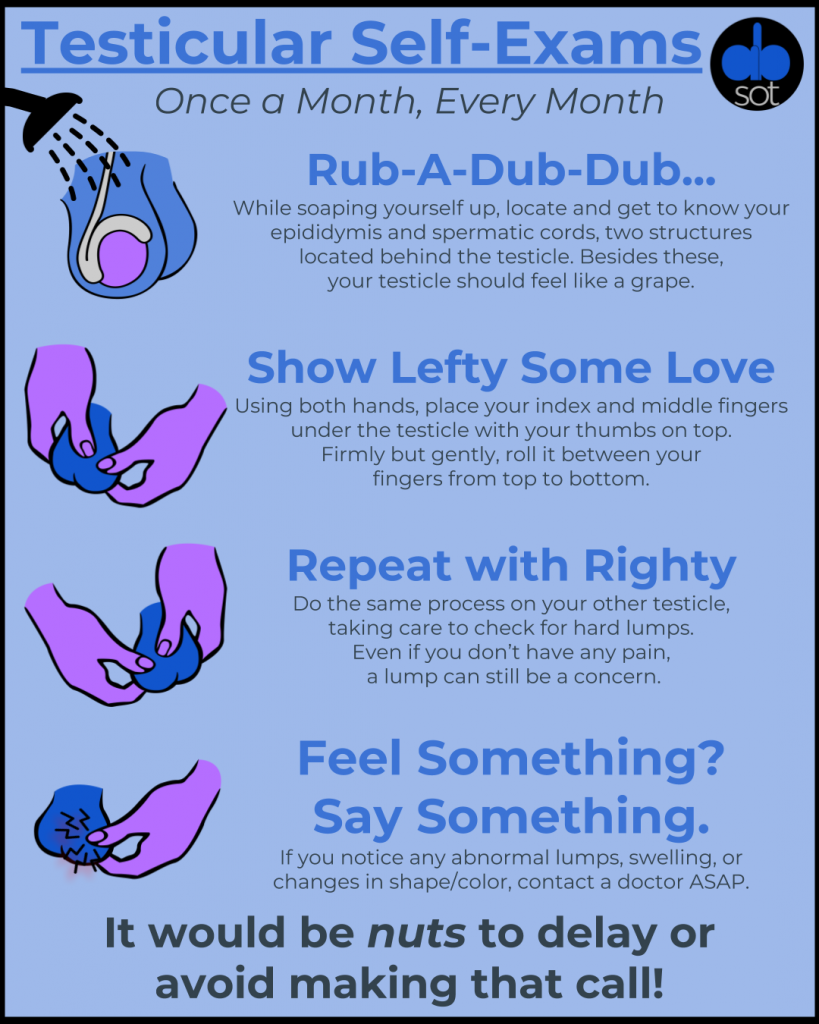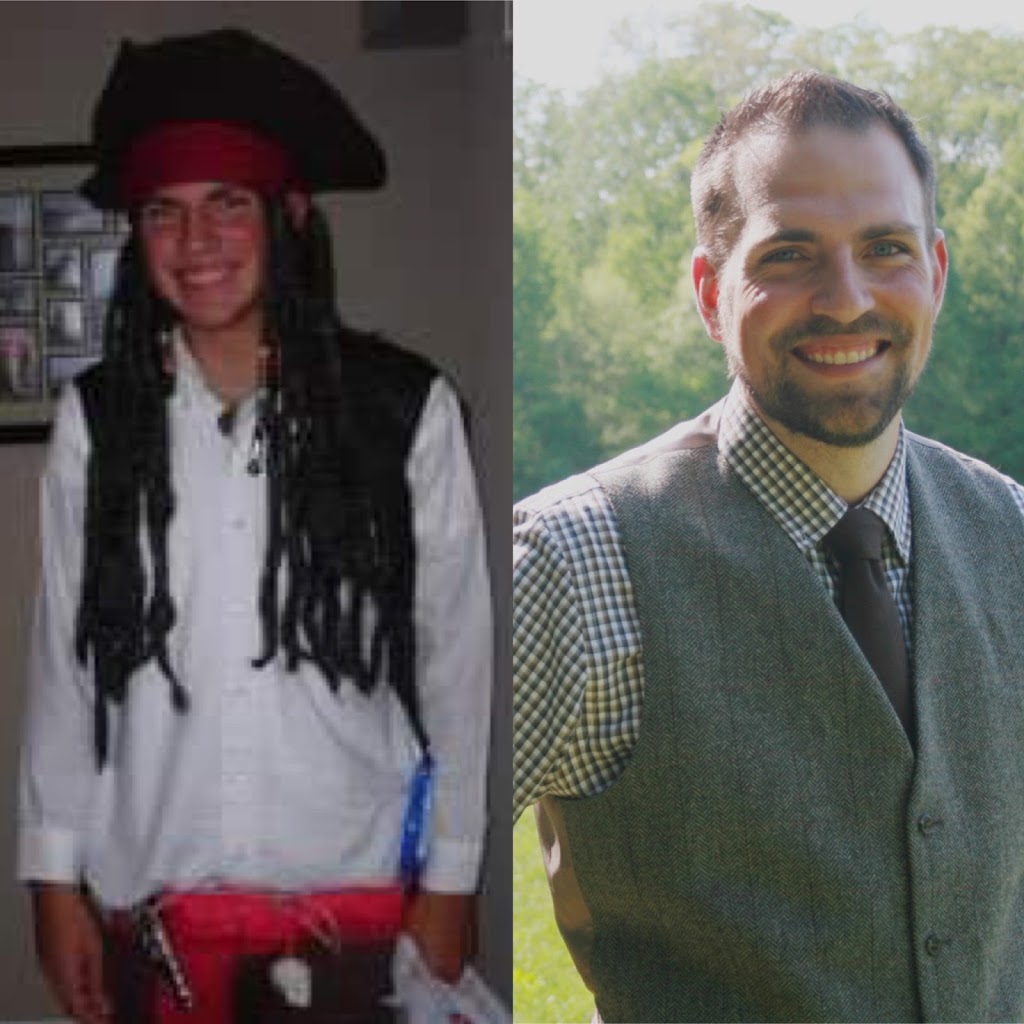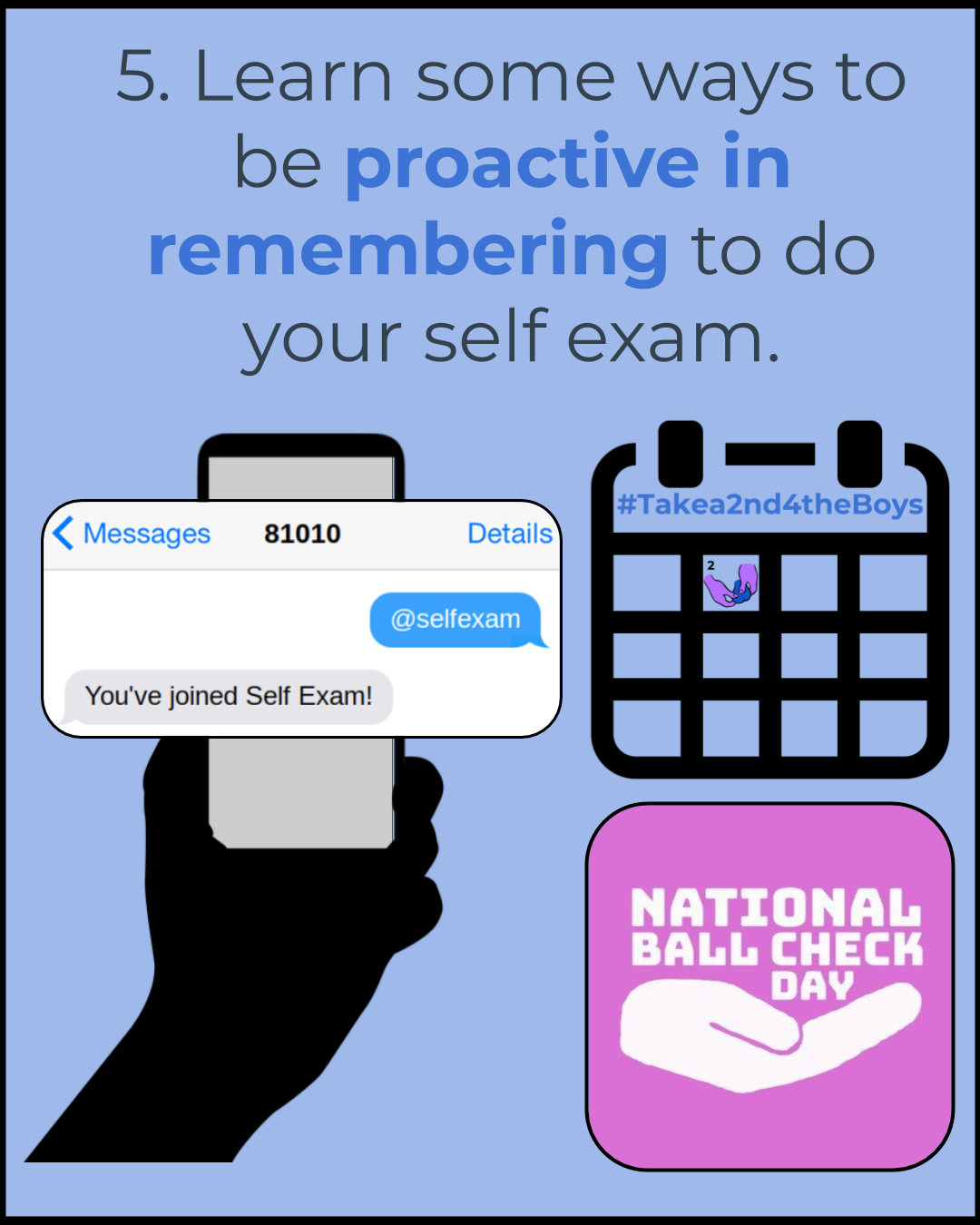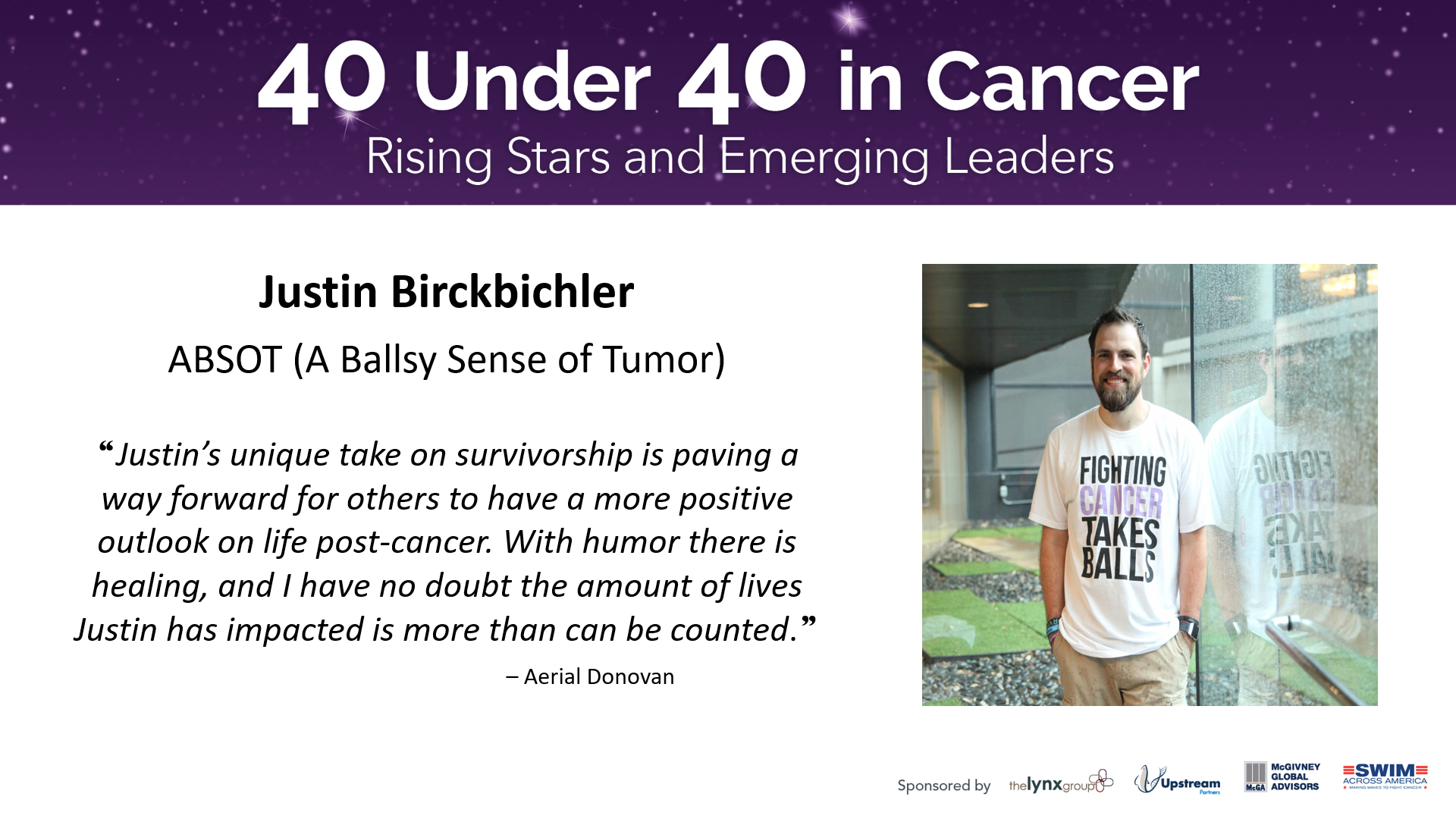Hanging In There is a Film That Wants You to Touch Yourself… But Not Like That
Following Band of Ballers alumnus Matt Wakefield’s (AKA Flatbagger) various social media accounts is one of my guilty pleasures in life. While I thought I was good at finding different objects to turn into testicular cancer awareness pictures, he definitely hits it out of ballpark. Through him, I learned about Manhood: The Bare Reality, which I had the opportunity to read and review in the fall. More recently, I saw he posted about his participation in a film called Hanging In There.
Intrigued, I did some research to learn more. According to the IMDb summary, the movie follows the story of a British man named Jack Jackson.
“Jack has a good life. Lovely wife, nice house, good job, great mates. All he wants on top of that is to be a dad. But life has a surprise for him: Testicular Cancer, and it’s about to change his life forever.”
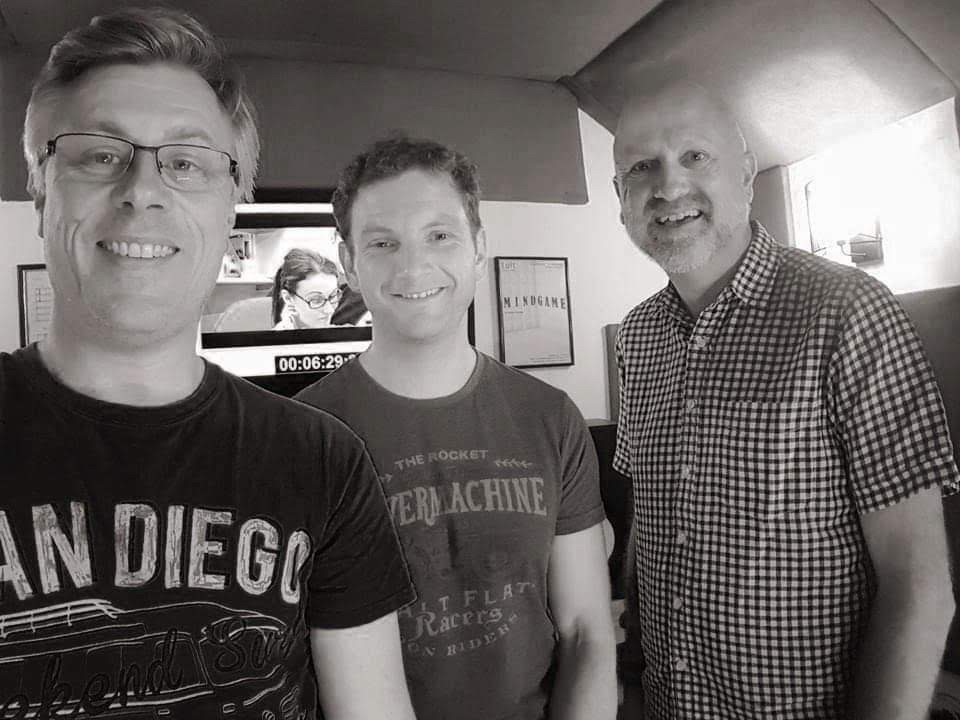
I also discovered that the movie was based on the stage production ‘Hanging In There’ by Geoff Saunders, which has been called “the play that could save lives.” Suffice it to say, I was hooked.
I reached out to Geoff (the writer and the man the film/play is based on) and Darren Scott (the director) to see if they could hook me up with a copy.
Like the overall tone of ABSOT, Hanging In There does a great job of blending information about testicular cancer with spots of humor.
Perhaps my favorite line in the entire film happens early in the film when Jack goes in to have a lump on his testicle examined. His doctor is a female (which reminded me of me going in to get my own lump checked out by a woman) and she refers him to a specialist.
Before parting ways, she says, “Don’t worry; You’ll be in good hands.”
Without missing a beat, Jack quips, “Will they be as good as yours?”
I’m calling it now. Hanging In There is destined to replace Gone With The Wind’s “Frankly, my dear, I don’t give a damn” as the first spot on AFI’s Top 100 Movie Quotes.
Beyond the witty moments, it does also take a poignant look at the stigma around testicular cancer.
Before experiencing the “good hands” of the doctor, Jack tries to play the lump off as not a big deal. Even when he finally decides to call for an appointment, he hesitates in saying the location of his lump, which again reminded me of my own experiences.
There’s a particularly powerful scene when Jack asks his pub friends if they do regular self exams. While one friend says that he absolutely does, the other man is offended and refuses to talk about it. Sadly, this is based on fact, with various studies finding that the majority of men don’t know how to do a self exam or outright refuse to talk about their health.
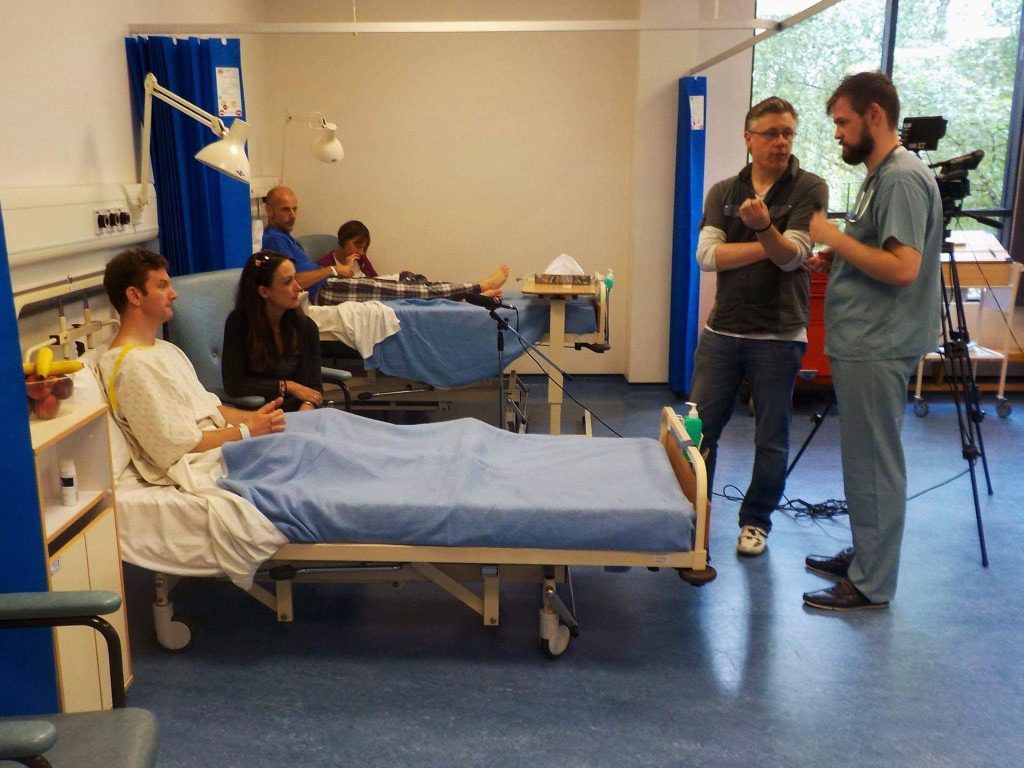
Beyond the societal implications, the film does a great job at looking at the impact of cancer on a marriage, friendships, the sense of masculinity and self, and more topics we don’t usually see in cinematic adventures. The movie truly is a complete package… unlike Jack, Geoff, and myself.
After finishing the flick, I reconnected with Geoff and Darren again for a behind the scenes look.
ABSOT: How much of Hanging In There is true versus fiction?
Geoff Saunders (writer and man behind the story): The sequence of medical appointments and procedures is based entirely on my experience, as are the physical and psychological side-effects they produced. The rest of the story is fictional, but informed by my life experiences.
Darren Scott (director): I think Geoff was able to heighten the drama in the film by filling in certain gaps from his own story with ones he’d heard about from other testicular cancer survivors.
That way, our protagonist Jack was able to be an ‘Everyman’ character that accurately covered the range of possibilities for someone with testicular cancer. Certainly the responses we’ve had from other survivors is that they identified with large aspects of Jack’s journey.
When we were filming, I was aware of some scenes being a bit more real for Geoff, and I’m guessing they were the scenes closest to his own personal story. I do know that the scene where Jack is told he has cancer, complete with that extraordinary response, was virtually word for word as it happened.
ABSOT: What was the road it took to go from your own story to a feature film?
GS: Hanging In There started as a stage play, written while I was recuperating from my orchidectomy in 2002. Darren Scott directed the first production in 2006 and the play was revived in 2007. In 2014, Darren contacted me to ask whether he could film the play. After a little hesitancy because I wondered if this play could work as a film, I agreed to write a screenplay… and it all began.

ABSOT: How did you get Hanging In There filmed? According to the video description, the film was “made with the generosity of businesses, hospitals, and medical professionals.” Can you elaborate on that?
GS: There are lots of stories to be told of people’s generosity in support of the project of filming Hanging In There. People gave their time to be supporting artists, with several spending two consecutive nights in a pub where we filmed four scenes, some gave cash to our Kickstarter appeal and others found us locations that we could use for free… We definitely saw the best of a lot of people!
For example, within twenty minutes of posting a message on Facebook about needing a doctor’s office as a filming location, a Practice Manager saw our request and wasted no time in making his offer. He then set about organising the location for us and even found us some supporting artists.
DS: Most of the time, the fact we were making a film about testicular cancer, was enough to open up all sorts of doors. We used genuine hospitals, bars and cafes and even a football ground all for free. A world class company called Filmlight even graded the film for us at no charge once they heard about our ambitions to make this film happen.
ABSOT: What has been the response to it so far?
GS: We’ve had very positive responses! People have said they’ve been moved by the story and entertained by the comedy. But they have also been responsive to the message, which is that early detection and treatment of testicular cancer can save your life.
I am pleased that everyone can find an ‘angle’ on the story that they connect to, whether that angle involves cancer or one of the other themes: communication between couples, dealing with crisis, friendship, or men’s fear of admitting vulnerability.
I have had some great conversations with people who’ve seen the film and I hope that everyone who sees it starts having those conversations too and gets the subject of the film ‘out there.’
DS: Our motivation for putting on the play, and subsequently making the film was simple. “If we could save one life, it would be worth it.” We know that someone who saw the film at our London Premiere was motivated to go and see his doctor and a few days later was diagnosed with prostate cancer which was treated quickly. He calls this film a ‘life-changer’. It’s humbling our film was able to reach out in such a powerful way.
ABSOT: What are the plans for Hanging In There going forward?
GS: My hope is that lots of people will download and watch and share the movie and get the word out to as many men as possible. I am very pleased with the work we have done, so I want to share it with the world!
ABSOT: What message do you want people (specifically men) to take from this?
GS: Simple. Check your balls. Find something? Go to the doctor as soon as possible.
Your life is in your hands.
In closing, I recommend that you check out Hanging In There
You can rent or download a copy for yourself here. It’s intriguing, entertaining, witty, and educational. At less than 90 minutes, it’s a great way to spend a lazy Saturday afternoon…
Right after you do your routine self exam, that is.
A self exam is how most cases of testicular cancer are detected early. Click the image for video directions or click here for a larger version
Want to work with Justin? Click here to learn more.
ABSOT is endorsed by the Laughter Arts and Sciences Foundation, a registered 501.c.3 charity. To make a tax-deductible contribution to help continue ABSOT's work with testicular cancer awareness and men's health, click the image below.

